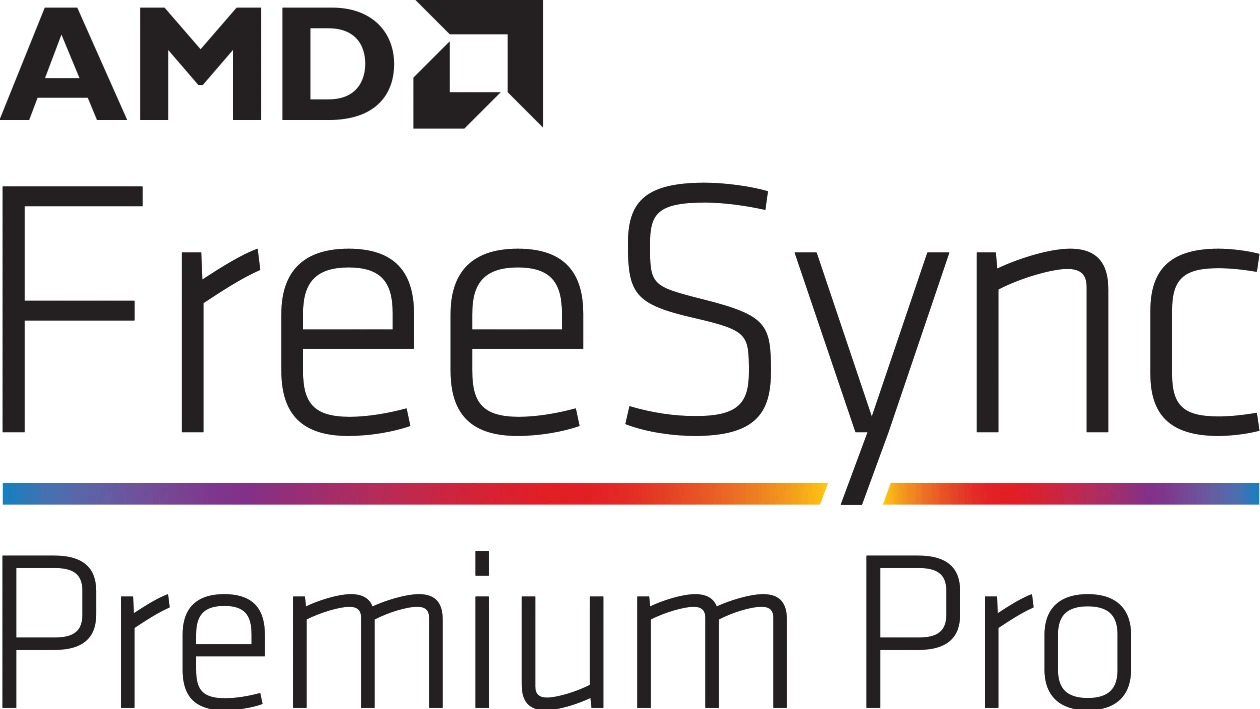Best OLED TVs 2022/11
In the high-end range, only a few TVs can compete with the ones listed here in terms of picture quality – of course, we’re talking about TVs with OLED panels! Below we present the best OLEDs so that you can find the right TV for you faster.
Nothing for you to find? In that case, why not use our TV buying guide or take a look at our tv toplist. There you will find a complete selection of our listed TVs and can set filters completely individually in order to find your perfect TV.
Hey! If you buy through our links, you support our project. It won't cost you a cent more! Many thanks in advance! ♥️
The best OLED TV: Sony A90J
If you’re looking for pure HDR power, there’s no getting around the Sony A90J Bravia XR. Improved heat dissipation allows the organic LEDs to get brighter without being damaged due to overheating. The reason for this is a metallic heat sink behind the OLED layers that cools the LEDs.
This is especially beneficial for HDRHigh Dynamic Range – image/video with more dynamic range (contrast range) content! This is because bright and delicate highlights can now be displayed even better. Due to the infinite contrast ratio, this results in a truly impressive picture quality. Of course, it’s a matter of taste, but the Bravia XR Processor manages to have the best picture processing and the TV can create a fairly natural picture, which in our opinion isn’t quite matched by other manufacturers.
Of course, the Master Series TV supports Dolby VisionDynamic HDR-format with a color depth of up to 12 Bits and Mastering of up to 10,000 Nits and also has access to the DTSMulti-channel-sound-system (Surround Sound) competing with Dolby Digital and Dolby AtmosObject-based surround sound format with 3D-Sound from any direction sound formats. Unfortunately, Sony does not yet offer Dolby Vision IQDynamic HDR-format with a color depth of up to 12 Bits and Mastering of up to 10,000 Nits, which can adapt to the ambient brightness. It only has an integrated Dolby Vision Dark and Bright mode, which allows you to manually adjust the content to the ambient brightness.
The A90J also has the innovative Acoustic Surface Audio+ feature, where the sound is created by actuators behind the display. So the sound really comes straight out of the picture! This feature is also supported when using an audio receiver, because the A90J can be integrated as a center speaker.
HDMI 2.1 is also available, but the TV still lacks some gaming features, which will be added via an update.
Similar image quality at a lower price: Sony A80J
If the A90J is too expensive and you want the second best OLED, then check out the A80J. It still got Sony’s best chipset, but it’s just a “normal“ OLED Panel without a heat sink.
The only drawback of the Sony OLEDs is their lack of advanced gaming features. This doesn’t matter for the PlayStation 5 but can be the dealbreaker for Xbox Series X.
With OLED evo panel, Gallery Design and Gaming-Specs: LG OLED evo G19
The bottom line is that the LG G1 evo even performs slightly better than the LG C1. This is due to the new OLED evo panel, which allows the TV to become slightly brighter than the other models in LG’s 2021 lineup. On the one hand, this allows it to perform even better in brighter surroundings, and on the other hand, it can showcase HDR content a bit better, so that more details are visible even in very bright picture content.
However, the differences between the G1 and C1 are not that big, so the price difference plays a big role in deciding which TV is more suitable. One thing is for sure: The G1 looks simply great with the Gallery Design and is an eye-catcher in every living room even when it is turned off. As far as interfaces and smart/gaming features are concerned, the two TVs are equally equipped and you really don’t have to do without anything in either model.
"Normal" OLED with Gaming-Features: LG OLED C17
The LG C1 also offers perfect black levels, an excellent contrast ratio and a very wide viewing angle thanks to the OLED technology. The C1’s build quality and design are also impressive. However, what distinguishes it from the two alternatives are, among other things, its gaming features and the integrated HDMI 2.1 interface.
Although other manufacturers’ TVs have also upgraded with HDMI 2.1 this year, this only really works satisfactorily with LG — especially in combination with Dolby Vision. This enables the large data transfer rates (up to 40 Gbit/s) that are needed for the current Xbox Series X and Playstation 5 consoles. A Variable Refresh Rate via FreeSync and G-Sync is also available to enable gaming without tearing, as well as Auto Low Latency Mode (ALLM), which automatically reduces the latency between input device and output device to a minimum.
It also supports many cloud gaming providers, so you can play your favorite games without Xbox Series X or Playstation.
Since the C1 has Dolby Vision IQ, HDR content is excellently optimized and even adjusted to the brightness of the environment. This makes it slightly better at producing a more respectable picture in bright environments, where OLEDs have more problems due to lower brightness.
Smart features are also very good on the LG C1. Google Assistant and Amazon Alexa are included as voice control. Streaming and mirroring from cell phones or tablets is possible via Apple AirPlay 2.
The absolute best OLED TVs: Samsung S95B
With the S95B QD-OLED, Samsung no longer excludes the OLED technology and expands its own portfolio with the popular self-luminous pixels. For this, the South Korean company by no means uses panels from the competitors, but equips its first flagship OLED with in-house technology from its subsidiary Samsung Display.
On this occasion, the high-end TV has been upgraded in terms of technology by combining it with the so-called Quantum Dots – which are already known from the QLED models. These – significantly smaller pixels – ensure an even more precise picture and turn the TV into an absolute high-end product.
With around 1250 nitsSI unit of luminance: 1 nit = 1 cd/m2 – The best way of measuring and comparing a TVs brightness , the TV is astonishingly bright for an OLED TV and thus also sets the future benchmark for devices of this genre. An additional highlight is the comparatively good reflection resistance of the screen, which is rather untypical for OLEDs.
However, the lack of Dolby Vision support – as usual – is a slight deduction. Those who would like to use a Ci+ slot will also come away empty-handed with the S95B. All in all, this TV is a true premium product and definitely ranks right at the top in the league of the best OLED TVs.
The best alternative with Gallery Design: LG OLED evo G29
The follow-up to the G1 from 2021 has the unsurprising name LG OLED evo G2 and raises the bar even higher at the electronics company from South Korea. Besides the already known Gallery Design, which is slightly larger for the photo frame TV of the 2022 lineup, the G2 primarily impresses with a new in-house luminance record.
This is due to a heat sink installed on the panel, which additionally cools the organic pixels. This feature allows the TV to adjust the screen more aggressively and thus provide higher brightness peaks.
Once again, you won’t get an included stand with the G2. Instead, the TV comes with a special wall mount that allows you to hang the device practically flush to the wall. However, that is exactly what the Gallery design was made for. If that’s not an option for you, you’ll have to pay extra for the base.
In addition to the slim design, the G2 has a so-called Gallery mode. With it, you can transform the TV into a work of art by displaying paintings from popular artists on the screen.
The best affordable OLED TV: LG OLED A19
The LG OLED A1 is the first OLED TV with a 60Hz panel since the introduction of the 120Hz panel. It is supposed to establish itself in the mid-range segment and further open up the OLED market. However, you quickly notice that LG has saved some features for the more expensive models.
Thus, the A1 does not look quite as high-end as its siblings and also has an even lower peak brightness than the B1. However, you also get the excellent OLED picture quality for your money, including the perfect blacks and the infinitely high contrast ratio that comes with it.
And even Dolby Vision IQDynamic HDR-format with a color depth of up to 12 Bits and Mastering of up to 10,000 Nits, which can adapt to the ambient brightness has been added to LG’s most affordable OLED TV. Therefore, the A1 is definitely worth a look, depending on the price range, if you do not necessarily have gaming in mind.
The A1 was not really designed for gaming. It does have a convincing motion handling, but it cannot display 120Hz content and does neither have a variable refresh rateHertz is the derived SI-unit of frequency with 1Hz=1/s – When talking about TVs this means how many different pictures a TV can display in one second. nor HDMI 2.1 – but it does not really need that with a 60Hz panel.
The best OLED TVs in comparison
| TV | Model year | Panel | Resolution | HDMI | HDR | Rating HDR Picture QualityMovies & SeriesGaming | Sizes | |
|---|---|---|---|---|---|---|---|---|
The best OLED TV: | ||||||||
Recommended  | Sony A90J | 2021 | OLED evo | 4K/UHD | 2x HDMI 2.1 (4K@120fps) ARC eARC | HDR10 HLG Dolby Vision | HDR Picture Quality Movies & Series Gaming | |
Alternative  | Alternative: Sony A80J | 2021 | OLED | 4K/UHD | 2x HDMI 2.1 (4K@120fps) ARC eARC | HDR10 HLG Dolby Vision | HDR Picture Quality Movies & Series Gaming | |
Alternative  | Alternative: LG OLED evo G19 | 2021 | OLED evo | 4K/UHD | 4x HDMI 2.1 (4K@120fps) ARC eARC | HDR10 HLG Dolby Vision IQ Dolby Vision | HDR Picture Quality Movies & Series Gaming | |
Alternative  | Alternative: LG OLED C17 | 2021 | OLED | 4K/UHD | 4x HDMI 2.1 (4K@120fps) ARC eARC | HDR10 HLG Dolby Vision IQ Dolby Vision | HDR Picture Quality Movies & Series Gaming | |
The absolute best OLED TVs: | ||||||||
Recommended  | Samsung S95B | 2022 | QD-OLED | 4K/UHD | 4x HDMI 2.1 (4K@120fps) ARC eARC | HDR10 HLG HDR10+ Adaptive HDR10+ | HDR Picture Quality Movies & Series Gaming | |
Alternative  | Alternative: LG OLED evo G29 | 2022 | OLED evo | 4K/UHD | 4x HDMI 2.1 (4K@120fps) ARC eARC | HDR10 HLG Dolby Vision IQ Dolby Vision | HDR Picture Quality Movies & Series Gaming | |
The best affordable OLED TV: | ||||||||
Recommended  | LG OLED A19 | 2021 | OLED | 4K/UHD | ARC eARC | HDR10 HLG Dolby Vision IQ Dolby Vision | HDR Picture Quality Movies & Series Gaming | |
The newest best affordable OLED TV
LG OLED A29
The LG OLED A2 brings great OLED quality to its panel for comparatively little money. Therefore, this model is perfectly suitable for entry-level users in this category. The perfect level of black and great picture stability provide great contrast and allow you to still look at a colorful and clear picture even in a larger group.
Although content in HDR looks really good, it does not quite reach the brilliance of more expensive models. The so-called motion handling also has to go with 60 frames per second. On the other hand, the A2 offers dynamic Dolby Vision IQ. This makes it possible for the TV to automatically adjust the picture content to your room brightness with the help of a built-in light sensor.
The 5th generation Alpha7 processor, which is also used in the B2, rounds off the picture and ensures that the A2 has enough power for image optimization and smooth navigation through webOS 22, LG’s current operating system. This also brings two new functions directly into your home.
On one hand, you can now assign an individual profile to every user of the TV, which can be customized. On the other hand, the input of voice commands has been reworked and meaningfully expanded by LG’s Hand Free Voice Control feature. This includes that you can now send your requests directly to the TV. The Magic Remote, as LG calls the remote control, is no longer necessary.


As a studied technology journalist Tobi likes to write regularly about the colorful world of TV sets & Co. Further interests: Music, cars, gaming, soccer
- The best OLED TVSony A90J
- The absolute best OLED TVsSamsung S95B
- The best affordable OLED TVLG OLED A19
- The best OLED TVs in comparison
- The newest best affordable OLED TV
- What makes the best OLED?
- Frequently asked questions about OLED Do OLEDs struggle with burn-in?Isn't my room too bright for an OLED TV?What are QD OLEDs?
What makes the best OLED?

OLED TVs among each other
Battle of the high-end models for the winner’s podium
In the absolute high-end sector, it’s hard to avoid OLED display technology. The abbreviation stands for organic light emitting diode. The big advantage of this technology is that no backlight is needed and the organic LEDs can simply emit the light themselves. This means that each individual pixel can be dimmed and can also be completely deactivated, resulting in an almost perfect black. Of course, this also affects the contrast ratio, which is theoretically infinitely high in OLED TVs.
Even though the 2021 mini LED TVs achieve a great contrast ratio of approximately 25000:1, this is still nowhere near as good as the contrast ratio of the OLED TVs. Therefore, it is easy to understand that they cannot quite keep up with the OLED TVs in the high-end sector. In addition, OLEDs have a very wide viewing angle, which means that black levels and colors remain intact even from the most oblique angles. This is also significant when sitting quite close in front of a large TV. Some TVs with VAVertical Alignment, type of LCD Panel panels look a bit darker and not as colorful when sitting too close, since the viewing angle is no longer wide enough.
But not everything is perfect. While burn-in is no longer that much of an issue, organic LEDs still can’t get as bright as their inorganic cousins. As a result, they can struggle a bit in very bright surroundings. In addition, the Automatic Brightness Limiter might be a bit annoying for some users, as it dims down the overall brightness in large bright scenes to protect the organic LEDs from overheating.
Frequently asked questions about OLED
Do OLEDs struggle with burn-in?
No, in normal, mixed use, the risk is almost only theoretical. The common OLEDs have been equipped with strong protection mechanisms that largely prevent the organic LEDs from overheating. Only the permanent display of static content could lead to impairments.
Isn't my room too bright for an OLED TV?
In most cases, an OLED TV can prevail over an LED-LCD competitor in terms of picture quality. The LED-LCD TVs only have the edge in a room with a lot of sunlight. However, you could also consider investing a few bucks in a curtain, which would then ensure that you can enjoy the outstanding picture quality of the individually dimmable organic LEDs.
What are QD OLEDs?
The new technology of QD OLEDs was first presented in January 2022 during the CES in Las Vegas. There, Samsung announced that it would launch OLEDs on the market for the first time itself, but with a new technology called QD OLED. Sony is also interested in the technology and will also launch its first QD OLEDs in 2022.
According to Samsung, the QD OLEDs are supposed to be brighter, offer a wider color display, deep blacks, a faster response time and a wide viewing angle. To achieve this, a blue, self-luminous OLED layer is built into the panel, on which red, green and blue Quantum Dots are located. The blue light is split into the different colors and there is no longer a white sub pixel. The intensity of the individual colors can finally be regulated on a pixel level. Thus, the new QD OLEDs have the same advantages as a regular OLED TV, but they can become significantly brighter and display colors even more precisely.
In addition, the technology is supposed to be much gentler on the eyes, since harmful blue light is reduced by 40-50%.















